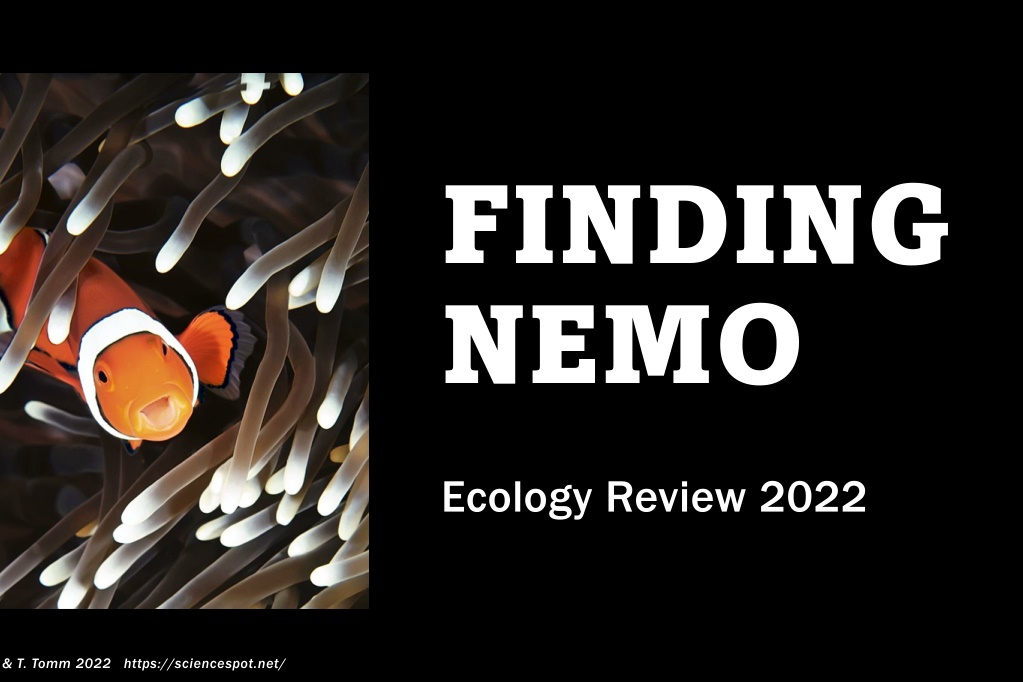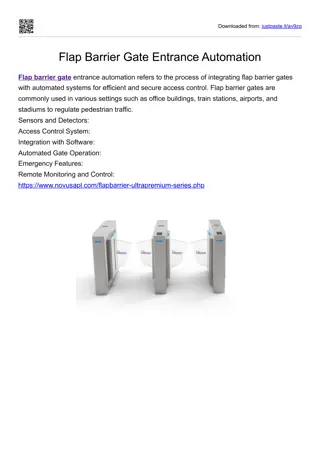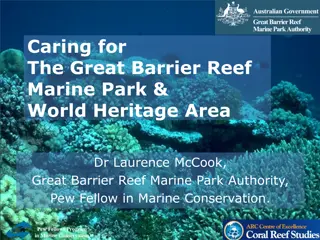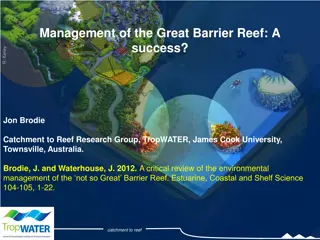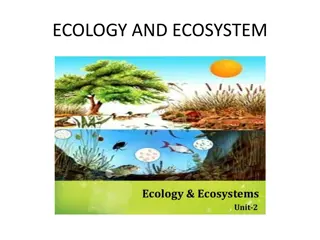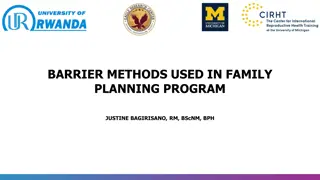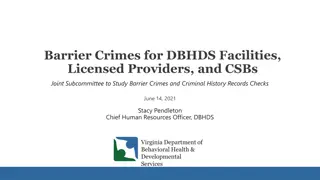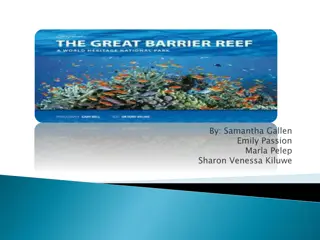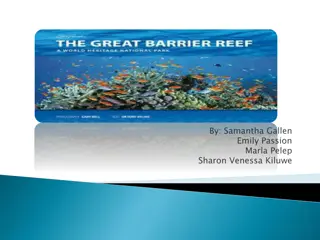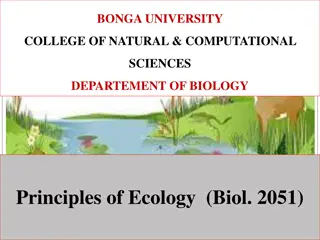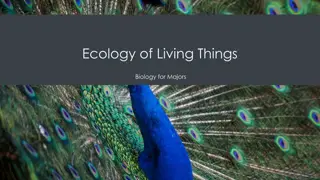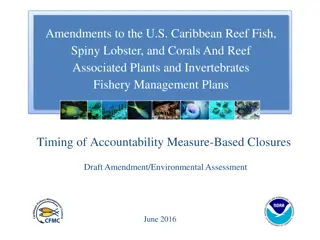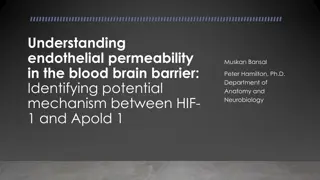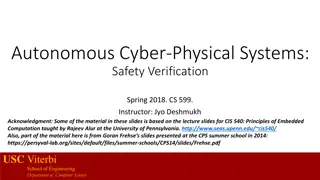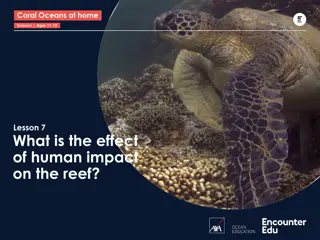Exploring the Ecology of Finding Nemo and the Great Barrier Reef
Delve into the fascinating world of "Finding Nemo" as it intertwines with the rich ecosystem of the Great Barrier Reef. Discover the challenges faced by marine life, from clownfish hiding in anemones to symbiotic relationships among different species. Learn about conservation issues like pollution, trash, invasive species, and coral bleaching impacting this iconic marine environment.
Download Presentation

Please find below an Image/Link to download the presentation.
The content on the website is provided AS IS for your information and personal use only. It may not be sold, licensed, or shared on other websites without obtaining consent from the author. Download presentation by click this link. If you encounter any issues during the download, it is possible that the publisher has removed the file from their server.
E N D
Presentation Transcript
FINDING NEMO Ecology Review 2022 & T. Tomm 2022 https://sciencespot.net/
Great Barrier Reef Australia - 1,429 miles long Conservation Issues Pollution, Trash, Invasive species, Coral bleaching He was injured in a barracuda attack that killed his mom and siblings. His mom, Coral, liked the name Nemo. A picture containing text, clipart Description automatically generated
Shrimp +, Nemo + Whale 0, Barnacle + Fish Parasites +, Nemo - Clownfish hides in an anemone for protection. It attracts food for the anemone. Tongue louse attaches to a Clownfish s tongue and eats the food the fish would normally eat. The fish starves to death. Anemone & Clownfish Tongue Louse & Fish Remoras attach themselves to the shark to get a free ride and enjoy the food scraps lift behind by the shark. They do not help or hurt the shark. Shark & Remora
Seaweed Coral (polyps) Clownfish Barracuda Pelican Shark Kelp Sponges Sea Turtle Zooplankton Butterfly fish Crabs Phytoplankton Coral (algae) NOTE: Different species may be classified as different types of consumers. Starfish Students may add more pictures to complete their webs.
What did you say? Done with all parts? Turn in on Google Classroom!
